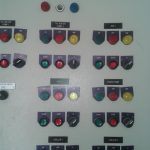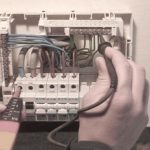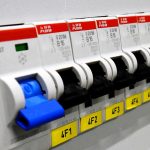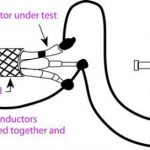
Fixed Wire Testing is a vital drill for any venture. As wires can weaken over time, your workplace could be considered no longer safe and compliant with current Electricity at Work Regulations. This puts you at risk of liability for an electrical incident, including any damage to the building, and injuries sustained by a member of the public or your staff.
Five yearly fixed-wire testing is a legal procedure for organisations to ensure that all electrical equipment is safe for human use, but this process could leave electrical components as a danger in the time between tests, potentially causing accidents in the workplace. Instead of this, a new approach to fixed wire testing came as a result of recent amendments to the IEE’s wiring regulations, which states that electrical installations should not be left for five years as was previously the case. Instead the procedure should be to complete an annual visual check of electrical installations for damage that may have happened over the year. The aforementioned 20% physical check is also adopted by many organisations as well.
Why Fixed Wire Testing?
It is a legal requirement. The Health and Safety at Work Act 1974 is an act of parliament which places a duty on all employers to; ensure, so far as is reasonably practicable, the health and safety and welfare at work of all their employees.
Within the act there is a provision for regulations which cover the legal requirement pertaining to specific subject areas and The Electricity at Work Regulations 1989 covers electrical systems within occupied premises. The purpose of the regulations is to prevent death or personal injury to any person from electrical causes in connection with work activities.
Employers and self-employed people must comply with the provisions of the Electricity at work regulations 1989. Regulation 4 (2) states that as necessary to prevent danger, all systems shall be maintained so as to prevent, so far as reasonably practicable, such danger
What is Fixed Wire Testing?
Fixed Wire Testing is the testing of the electrical installations within a building to ensure they are safe & compliant, and employers are legally required to ensure, as far as is reasonably practical, the health, safety and welfare of their employees. Fixed wire testing is a crucial part of that requirement.
Testing your buildings electrical installations also provides additional benefits to you, identifying areas where you can reduce electrical energy usage, helping with your green credentials as well as saving you costs.
Fixed Wire Testing relies on a mixture of visual inspections and specialist equipment to determine safety.
How do we do Fixed Wire Testing?
Circuits must be switched of to ensure safe Fixed Wire Testing and so that the condition of the circuit can be identified, which may cause some inconvenience to those using the facilities. It may be better to arrange for testing to happen outside operational hours. Specialist equipment is used for the tests to highlight any lack of earthing or bonding, discover and rectify overloaded circuits and to find potential hazards. Circuit breakers and trip mechanisms will be tested and put through tests to replicate fault conditions to ensure their fail-safe mechanisms are] sound. Common faults found in electrical installations are faulty equipment or wiring, overloaded sockets and circuits, broken accessories and poor installation work.
Testing:
We perform the following tests:
Test 1: Switching devices inspection
Visual inspection of a small sample of switching devices to assess their working condition
Test 2: Protective devices inspection
Verification of the accessibility, condition and presence of those devices used for isolation, protection and switching. Overload settings and protection of the fuse or circuit-breaker will be assessed
Test 3: Marking and labelling
Ensuring that each circuit is labelled correctly and that the following is clearly marked; different voltages, earthing and bonding connections, Residual Current Devices (or R.C.Ds)
Test 4: Continuity of Protective Conductors and Earthed Equipotential Bonding
Verifying the continuity of any installations that may be safely isolated from the supply. Continuity and earth fault loop impedance tests will ensure the combined integrity of conductors.
Test 5: Polarity Test
Ensuring correct polarity at the meter and consumer unit (or distribution board), socket outlets have safe connections with their conductors, lamp holders are correctly attached to the earthed neutral conductor and multi-pole devices have been installed correctly.
Test 6: Earth Fault Loop Impedance
Connection of a resistor from the phase to the protective conductor to confirm correct connection and warn of reversed polarity.
Test 7: Insulation Resistance
Ensuring insulation prevents the leakage of electrical current.
Test 8: Operation of Devices for Isolation and Switching
Verifying how effective isolation and switching devices are as well as their labels and markings.
Test 9: Operation of Residual Current Devices
Simulation of fault conditions to ensure that current trips where it should.
Reporting:
Reporting is an essential part of the Fixed Wire Testing procedure and any signs of wear, damage, deterioration or overheating from the initial visual inspection, or any problems that breach regulations must be included in this document, known as the Electrical Installation Condition Report. The report will have the results of each test and show whether the tested areas and installations are safe to use until the next due installation.
How Often Should you do Fixed Wire Testing?
How often you should conduct Fixed Wire Testing can depend on a lot of factors, including the type of installation and where it is (e.g. a hospital, educational establishment, office or shop, etc). It will also depend on the amount of use and the way an installation is used, how frequently (and how well) an installation is maintained and any external influences, such as the environment and conditions in which it is kept.
A change of occupancy will usually trigger a need for Fixed Wire Testing and for the majority of commercial properties, a period of 5 years between Fixed Wire Testing Inspections is required, with routine checks being completed annually. This is as recommended by IET guidelines.
Regular audits of your sites will help you manage and prioritise how often Fixed Wire Testing should be conducted and good record keeping is essential for ensuring you can easily locate necessary certificates of compliance and Electrical Installation Condition Reports. Choosing a contractor with nationwide coverage, like Carelabs, is a good idea if you have multiple sites and will help you negotiate rates and levels of service.
Notify staff well in advance about upcoming testing so that they are aware to save their computer work or power down machinery.












